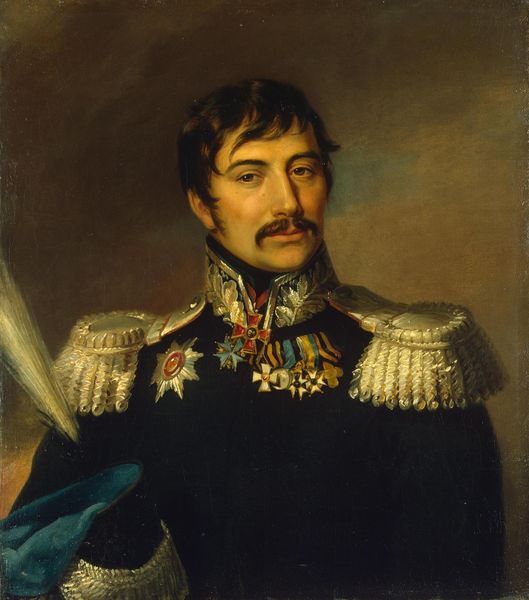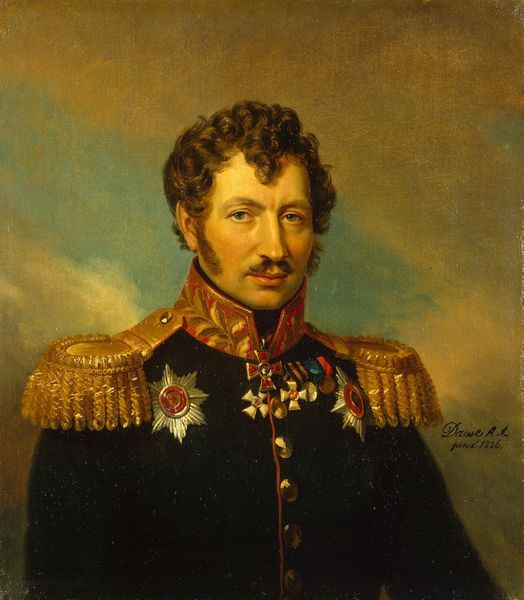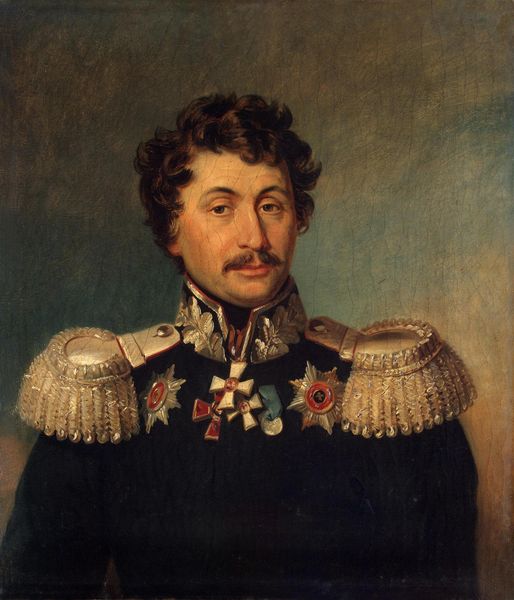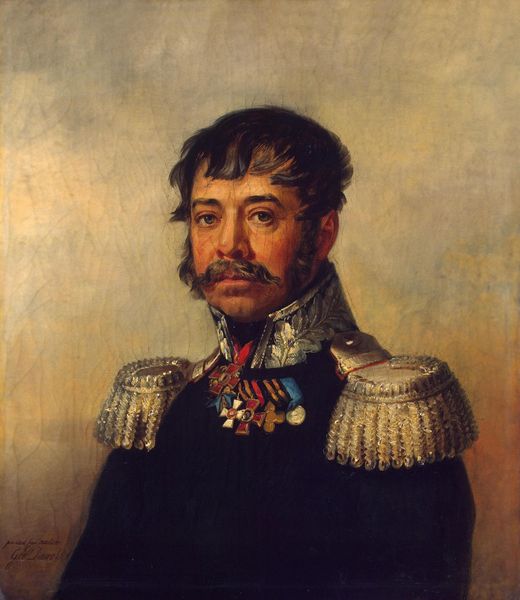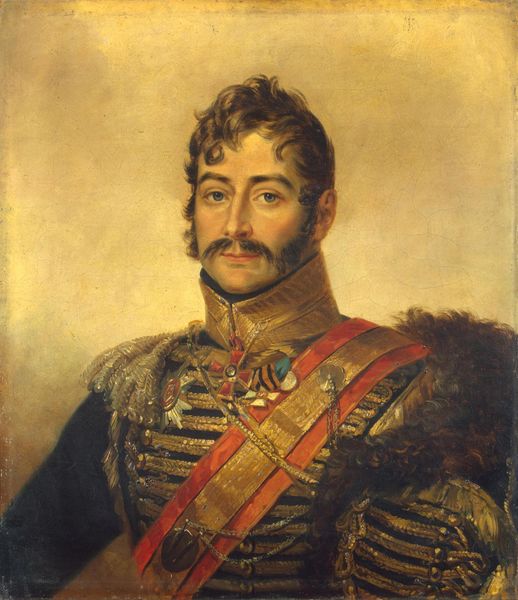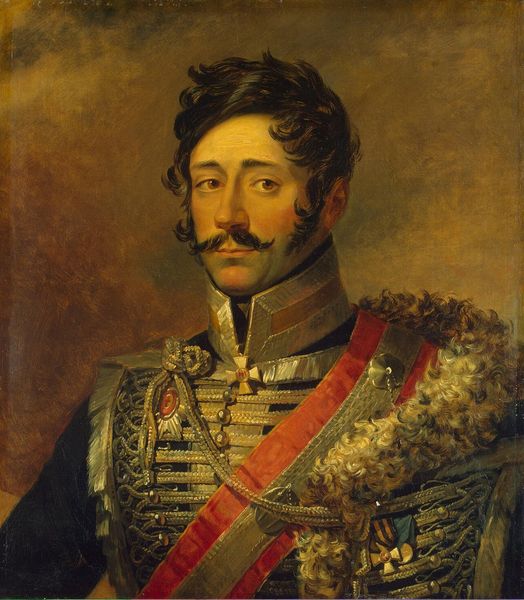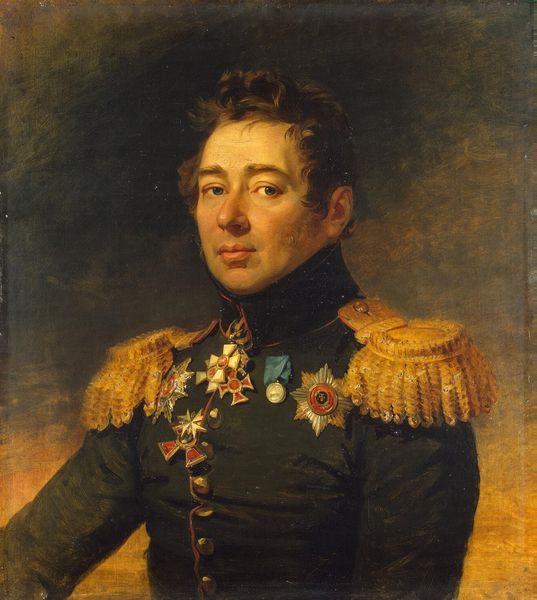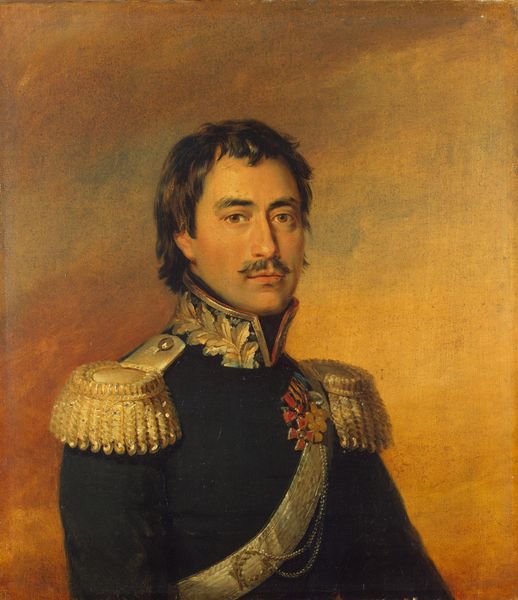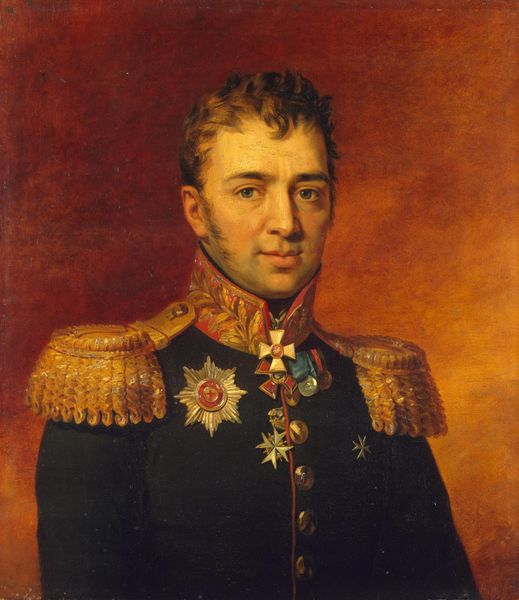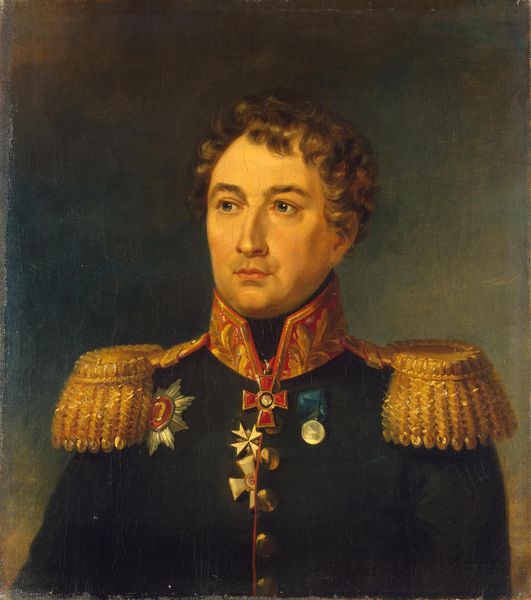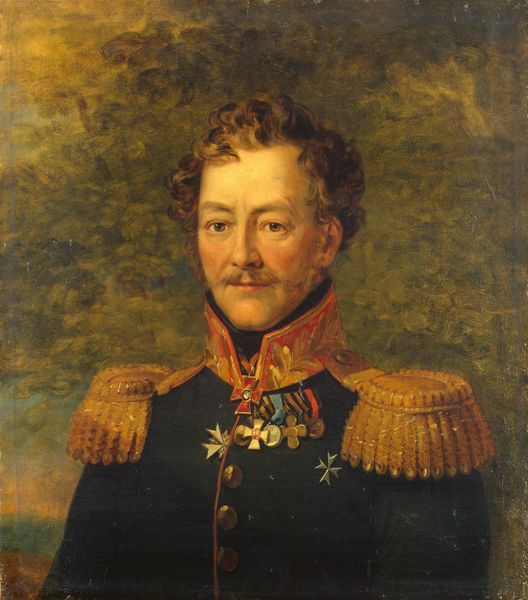
oil-paint
#
portrait
#
portrait
#
oil-paint
#
portrait reference
#
portrait head and shoulder
#
romanticism
#
animal drawing portrait
#
portrait drawing
#
history-painting
#
facial portrait
#
portrait art
#
fine art portrait
#
celebrity portrait
#
digital portrait
Copyright: Public domain
Editor: This is a portrait of Grigory Dimitriyevich Ilovaysky, a Russian Major General, painted by George Dawe, using oil paints. It gives off a feeling of power but also of something…unsettled, maybe? The weight of responsibility seems to be etched on his face. What's your take on this piece? Curator: That "unsettled" feeling might stem from the tension between the Romantic style, which idealizes the individual, and the reality of military power during that era. Think about it: Russia was expanding, often through violent means, impacting diverse ethnic and cultural groups. Dawe, as an English artist, painting Russian generals for the Tsar... It raises questions about his own positionality and the potential glorification of imperial power. Editor: I hadn’t considered the political angle, but it’s obvious now. The medals and elaborate uniform do seem less about personal glory and more about representing state power. Were portraits like this common at the time? Curator: Absolutely. These portraits were vital tools for solidifying power and creating a visual record of authority. But let’s also consider who was *excluded* from these visual representations. Where are the portraits of the soldiers who fought and died, the peasants who supported the war effort, or the diverse communities impacted by Russian expansionism? Their absence speaks volumes. It prompts us to question whose stories are being told and, more importantly, whose are being silenced. Editor: So, it's not just a painting of a man, but a symbol of a larger, more complex historical narrative? Curator: Precisely! It's about understanding the intersections of art, power, and representation, and acknowledging the silences within historical narratives. How does recognizing that context shape your initial response now? Editor: It definitely adds a layer of critical awareness. I'm not just seeing a general; I'm seeing the system he represents and those it affected. Thank you.
Comments
No comments
Be the first to comment and join the conversation on the ultimate creative platform.
